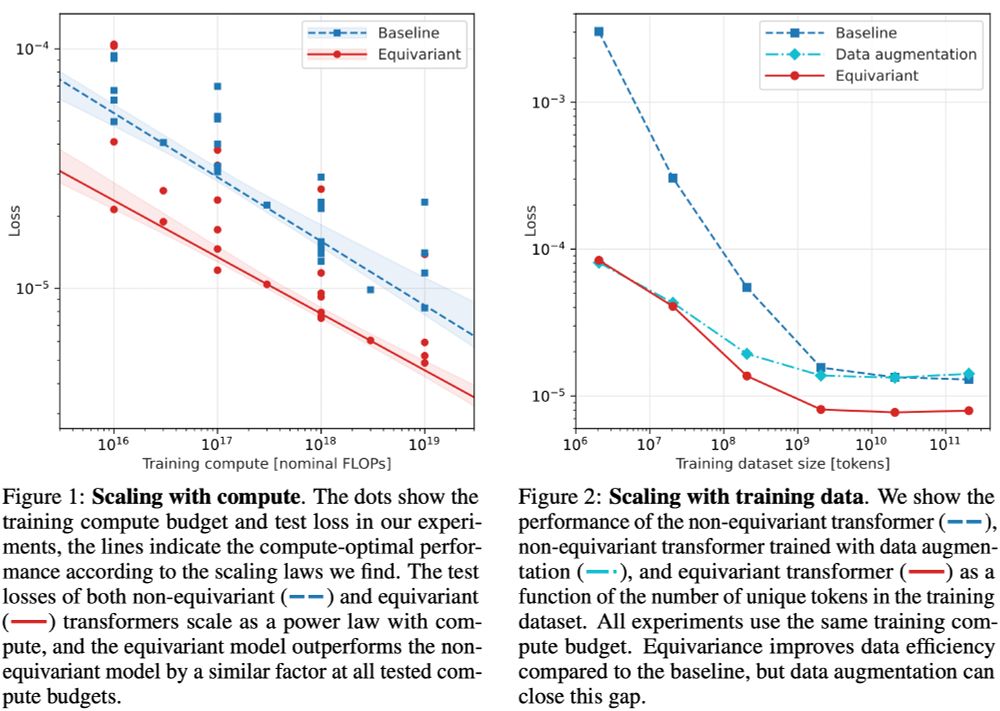“Very simple, dear: the mass of a dynamical system is the cohomology class of the Galilean group representing lack of equivariance of the moment map on the symplectic manifold that is the phase space of the system.”
“Very simple, dear: the mass of a dynamical system is the cohomology class of the Galilean group representing lack of equivariance of the moment map on the symplectic manifold that is the phase space of the system.”
Not ✱hugely✱ viral, but ✵annoyingly✵ viral. The sort of viral where you get lots of uninteresting replies or quote-posts by idiots, enough to drown all other notifications.


Not ✱hugely✱ viral, but ✵annoyingly✵ viral. The sort of viral where you get lots of uninteresting replies or quote-posts by idiots, enough to drown all other notifications.
Can we predict Hessians with correct equivariance?
Can we do this with any MLIP, like Mace or Uma?
Do we even need Hessians?
Head over to The Matter Blotter to find out now!
aspuru.substack.com/p/hip-hessia...
(Spoiler: Yes)

Can we predict Hessians with correct equivariance?
Can we do this with any MLIP, like Mace or Uma?
Do we even need Hessians?
Head over to The Matter Blotter to find out now!
aspuru.substack.com/p/hip-hessia...
(Spoiler: Yes)




Advancing Diffusion Models: Alias-Free Resampling and Enhanced Rotational Equivariance
https://arxiv.org/abs/2411.09174
Advancing Diffusion Models: Alias-Free Resampling and Enhanced Rotational Equivariance
https://arxiv.org/abs/2411.09174
Abstract: Current self-supervised algorithms mostly rely on transformations such as data augmentation and masking to learn visual representations. This is achieved by inducing invariance or equivariance with [1/8 of https://arxiv.org/abs/2505.03176v1]
Abstract: Current self-supervised algorithms mostly rely on transformations such as data augmentation and masking to learn visual representations. This is achieved by inducing invariance or equivariance with [1/8 of https://arxiv.org/abs/2505.03176v1]

(1) Bridging Symmetry and Robustness: On the Role of Equivariance in Enhancing Adversarial Robustness
(2) Beyond Text: Multimodal Jailbreaking of Vision-Language and Audio Models through Perceptually Simple Transformations
🔍 More at researchtrend.ai/communities/AAML
FRED: Towards a Full Rotation-Equivariance in Aerial Image Object Detection. (arXiv:2401.06159v1 [cs.CV])
http://arxiv.org/abs/2401.06159
FRED: Towards a Full Rotation-Equivariance in Aerial Image Object Detection. (arXiv:2401.06159v1 [cs.CV])
http://arxiv.org/abs/2401.06159
The Equivariance Criterion in a Linear Model for Fixed-X Cases
https://arxiv.org/abs/2204.10488
The Equivariance Criterion in a Linear Model for Fixed-X Cases
https://arxiv.org/abs/2204.10488
Could the result on privileged axes help us understand whether symmetries are architectural (inbuilt equivariance?) or learned / distributed?
Could the result on privileged axes help us understand whether symmetries are architectural (inbuilt equivariance?) or learned / distributed?


But did you expect equivariant models to also be more *compute*-efficient? Learning symmetries from data costs FLOPs!
arxiv.org/abs/2410.23179
With Sönke Behrends, @pimdh.bsky.social, and @taco-cohen.bsky.social.
5/6


